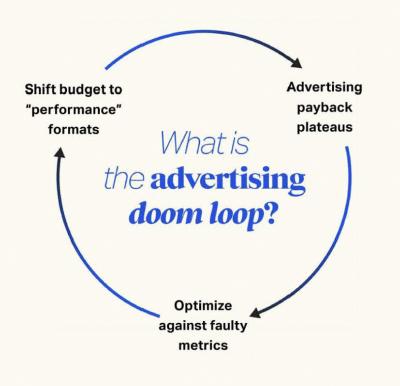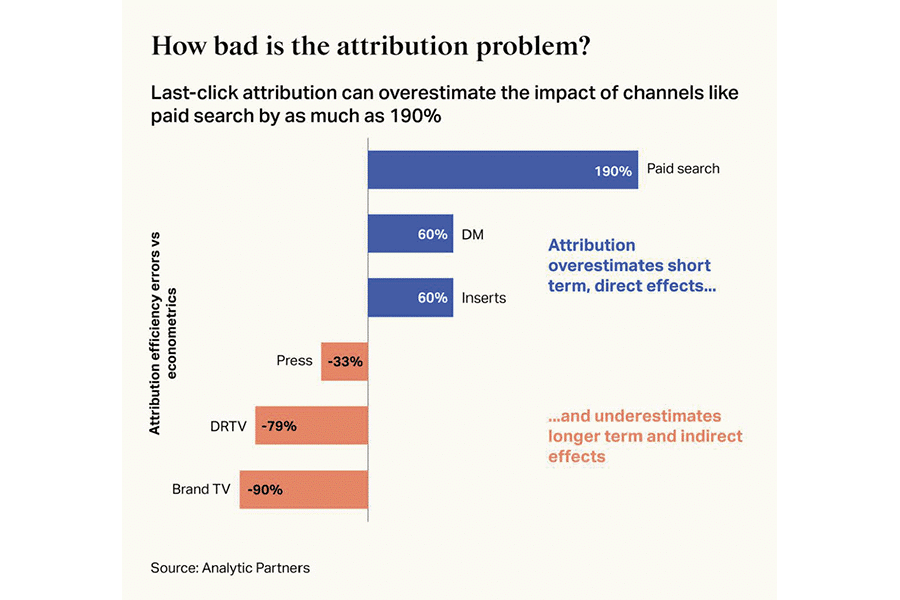How To Stop Wasting Money on Digital Ads
Shallow brooks murmur loudest, but the deep rivers run silent and strong.
– Old English Proverb
Sweet Dreams are Made of This [i]
December 10, 1949, Stockholm – The atmosphere inside the Stockholm Concert Hall pulses with anticipation. Outside, a light snow blankets the frosty city, perhaps foreshadowing the chilling climax of tonight’s proceedings.
The crowd grows silent as a tuxedoed presenter steps to the podium.
António awaits in the darkness offstage. When the presenter calls his name, he strides onstage to the crowd’s roaring approval. King Gustav V greets him, drapes the medal around his neck, and steps back.
António basks in this moment, alone in the spotlight.
Recognition from his peers in science and medicine puts him at the very pinnacle of his profession. This moment – almost two decades in the making – will cement his legacy.
Within days, hospitals around the world begin using his new technique. Over the next decade, tens of thousands of sufferers undergo his prize-winning procedure.
The future is bright.
Tainted Love [ii]
June 25, 2020, Beaverton, Oregon – CEO John Donohoe straightens his tie and looks at the camera. Since taking the reins at Nike, he’s had it with his marketing team’s inability to answer his simple questions.
- “Which of our marketing campaigns has the best ROI?
- “How do we rank our ads from most profitable to least profitable?”
- “How do we test, measure and optimize the effectiveness of our ads?”
- “How do we test, measure and optimize the effectiveness of each media channel?”
In his previous positions running eBay and PayPal, his marketing teams always had answers to these questions. At Nike, they don’t. All he gets are squishy explanations about unmeasurable efforts.
That’s why today he’s announcing a major shift in Nike’s marketing strategy.
For decades, Nike spent 10% of sales on brand building. (Think “Just Do It”.) But that kind of advertising defies measurement. Starting today, the company will shift its focus from brand building to digital advertising.
This model worked for him before, and it will work now. Digital ad technology will enable the company to test, measure, and optimize every penny of their marketing budget.
The future is bright.
Boulevard of Broken Dreams [iii]
In 1949, Neurologist António Moniz won the Nobel Prize in Physiology or Medicine. Less than a decade later, the cheers had turned into revulsion. António’s moment of glory proved to be the Nobel Committee’s worst-ever decision. His alleged breakthrough treatment for mental illness became a synonym for “astonishingly stupid” – lobotomized.
4 years after announcing Nike’s change of direction, John Donohoe was ousted as CEO. Under his watch, the company lost $157 billion dollars in market cap, $27 billion in one day. Nike’s new CEO announced that the company would return to brand building, the type of advertising that had made Nike the world leader in its category.
In defense of Moniz, mental illnesses such as depression and schizophrenia defied all known treatments. Psychiatrists and patients alike hungered for any sort of breakthrough. Moniz promised a revolutionary approach to deliver a much-hoped-for cure.
In defense of Donohoe, business leaders and marketers hungered for a way to test, measure and optimize their advertising. Digital advertising was like a Yellow Brick Road leading to the promised land of Perfect Marketing Knowledge.
In both cases, too much enthusiasm coupled with too little skepticism resulted in devastation, not dreams.
Dust in the Wind [iv]
So, what’s the lesson?
As business owners, we need answers. How can we know for certain which of our ads work and which don’t? Is there any way to quantify the effectiveness of our ads?
And let’s be frank: fast answers are far more attractive than answers we must wait for.
Digital advertising promises not just faster answers, but better, more accurate answers.
Much like those desperate psychiatrists, suffering patients and John Donohoe, we’ve believed the hype. Digital advertising promises a miracle cure. But it doesn’t deliver.
A recent report from marketing research firm WARC describes the “damage, not deliverance” that results from over-reliance on digital advertising.
 Not only has digital advertising failed to deliver on its promises, it’s created a whole new kind of problem WARC labels The Doom Loop.
Not only has digital advertising failed to deliver on its promises, it’s created a whole new kind of problem WARC labels The Doom Loop.
See if this sounds familiar.
First, you dip your toe into the digital marketing waters. Then…
- Your new digital marketing campaign delivers immediate results. You’re ecstatic. In the dark recesses of your mind, you begin to imagine cool new ways to spend all your extra profits.
- In just a few weeks, the effectiveness of the digital campaign wanes. You’re concerned. Perhaps you should postpone those dream purchases a little while longer.
- Your “digital marketing experts” advise you to bump up your digital budget a little bit more. It worked the last time, so you open your wallet and start pouring ever more money into digital. And it seems to work for a while, though not as good as the last time.
- And back you go to the top of the loop.
Like a heroin junkie eternally chasing the dragon, you dump ever increasing money into digital ads and reap ever worsening results.
The Doom Loop is a vicious, self-perpetuating cycle of increasing ad spend and diminishing ad returns.
Back in Black [v]
Brand building is hard to measure in the short term. Digital advertising is easy to measure. The temptation is obvious. But WARC’s research is conclusive.
When you shift your ad budget from brand building ads to transaction-focused ads, then you will cause your results from both types of advertising to stall.
On the other hand, when you focus the majority of your advertising budget on brand building, then you amplify the results from all your advertising efforts.
Nike had deep enough pockets – and the corporate DNA built from Just Do It – to survive their self-inflicted lobotomy. Your company probably doesn’t.
So, what do you do?
Focus the majority of your marketing budget on brand building.
It takes time. It defies easy measurement. Yet it is the only strategy that has been proven over and over again to build great companies.
When your company is the one people know best, like most and think of first, then you will be who they call when they’re ready to buy. And the research suggests they’ll spend more with you than a company they don’t know, like or trust.
That’s a whole lot better than a lobotomy.
Need help building your brand power? Drop me a note.
[i] The Eurythmics, 1983
[ii] Soft Cell, 1981
[iii] Green Day, 2004
[iv] Kansas, 1977
[v] AC/DC, 1980
- Shared Suffering: The Missing Ingredient in Customer Loyalty - June 25, 2025
- The Unignorable Jingle: Win Hearts & Customers in 8 Seconds - June 17, 2025
- The Metric Trap Sabotaging Your Marketing - April 17, 2025

